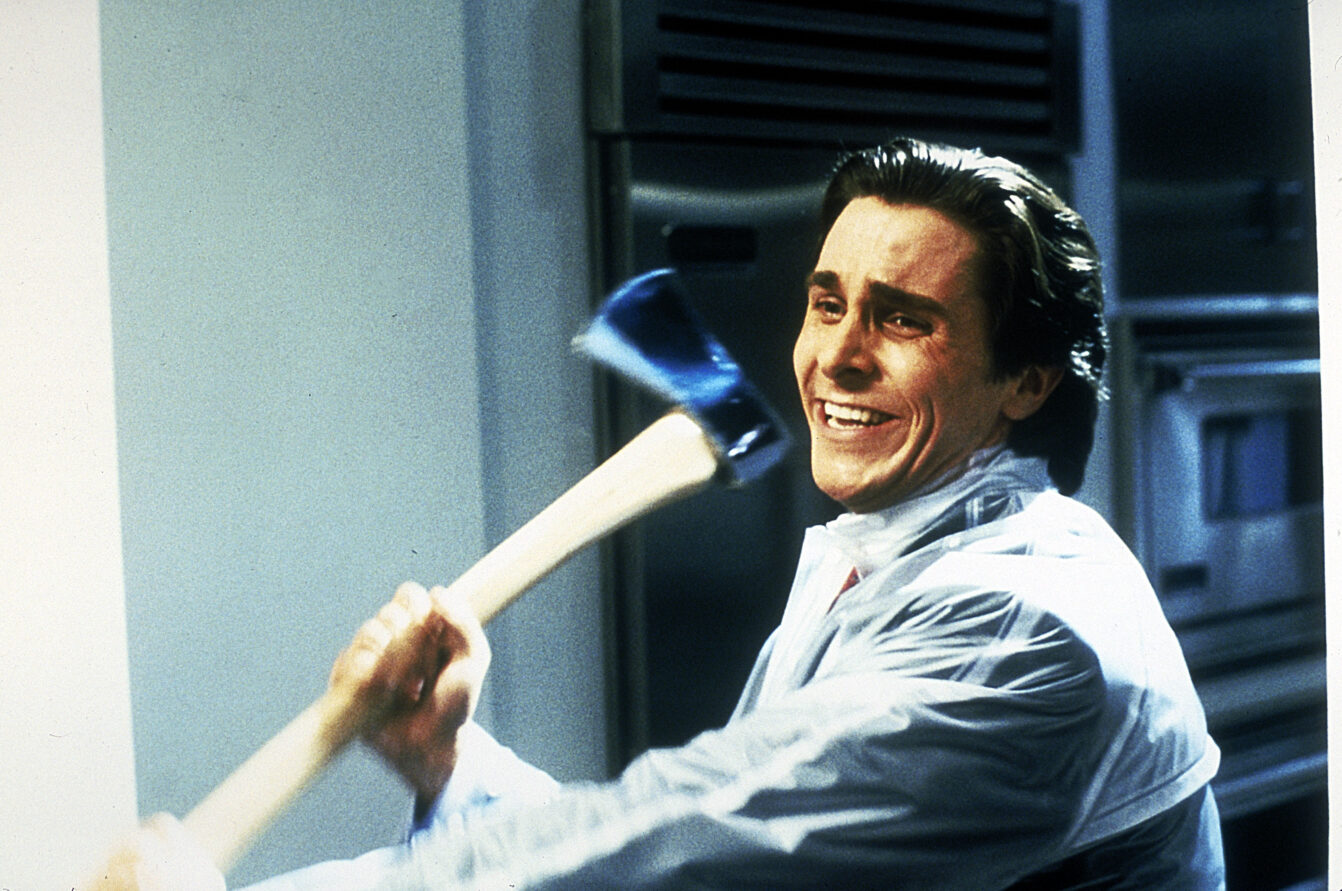“American Psycho” (2000) Reflects the Class Struggles of Today.

by Selene Ashewood ’22
 American Psycho: The infamous film adopted from the 1991 novel by Bret Easton Ellis that went uncomfortably deep into examining the world of wealth—specifically through the lens of said American psycho. The endless atrocities he commits in the film all come from the same thing: his money. It consumed him and fixated his life on upholding a status associated with his bank account. This avenue is used to craft a case study of the consequences (and lack thereof) that come with being rich. While wealth is nothing new, the film’s overt obsession with and commentary on it have become relevant again since class divides are more potent than ever. Set in the 80s, released in 2000, the movie still has much to say and much to imply when viewed by current lenses.
American Psycho: The infamous film adopted from the 1991 novel by Bret Easton Ellis that went uncomfortably deep into examining the world of wealth—specifically through the lens of said American psycho. The endless atrocities he commits in the film all come from the same thing: his money. It consumed him and fixated his life on upholding a status associated with his bank account. This avenue is used to craft a case study of the consequences (and lack thereof) that come with being rich. While wealth is nothing new, the film’s overt obsession with and commentary on it have become relevant again since class divides are more potent than ever. Set in the 80s, released in 2000, the movie still has much to say and much to imply when viewed by current lenses.
Following Patrick Bateman and his psychological abnormalities, the movie depicts his bloodthirsty hobby of serial killing overtaking him and colliding with his classy job and life on Wall Street. Bateman’s tendency to only murder or threaten the poor (homeless people, prostitutes) has more meaning to it than just a killer’s preference. He does so because they are less likely to receive any justice; therefore, he can slash them in the night and escape consequence. To the materialistic superficial culture of New York City and to Bateman, those with little financial means are not even people in his eyes. But then again, nobody really is to him. Justice and the upper-class disregard for it has unfortunately become a very common phenomenon as of late with performative activism and an increasing detachment in how richer people view working class issues. Bateman acted this way before social media “activism” came about. In the first act, he and his fiance dine with their friends of similar economic status when the topic of genocide in Sri Lanka comes up. He performs a speech about the need for civil rights, equal opportunity for women, and every humanitarian talking point of the time. Of course, it was just in the vein of seeming educated and classy. Because in the very last scene, Reagan addresses the nation on TV, and a coworker asks Bateman his thoughts on the Iran-Contra. He looks over with detest in the eyes and coldly states “Whatever.”
The current state of economic inequality in our country was very amplified by the pandemic and by the previous administration. The Trump name, with both its 80s era connotation of financial success and its recent connotation of waving away the working class, is mentioned three times in the movie. With that as a primer the references to Ronald Reagan, who is President in the movie’s setting, feels up to date. The portrayal of society during a hyper-masculine presidency embodied by a man of money reflects the fears and even some realities faced by the poor while Trump was in office. The political climate discounted the working class into deathly situations; and empowered rich men enough to carry out heinous acts. When those in power extend an ideology of wealth and status, the lower classes suffer–specifically at the hands of the rich.
I had initially watched this movie because I thought it would satisfy my Halloween spirit. But the film was a horror for reasons other than its slasher tendencies.